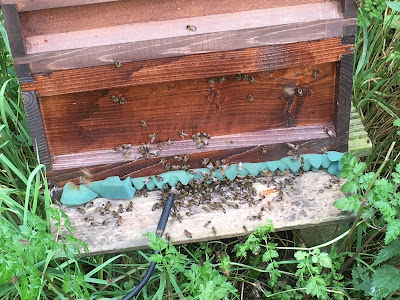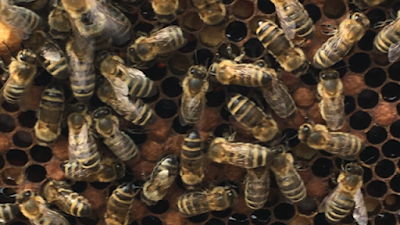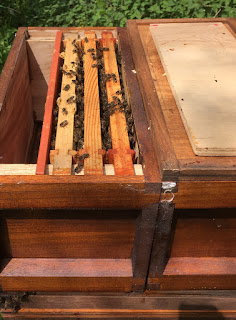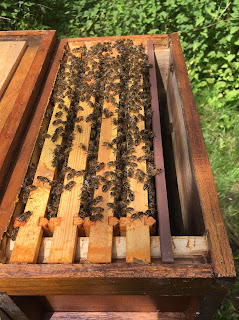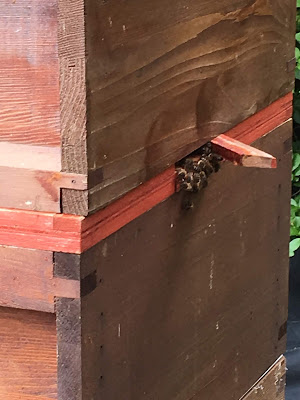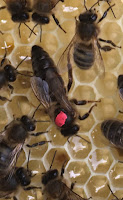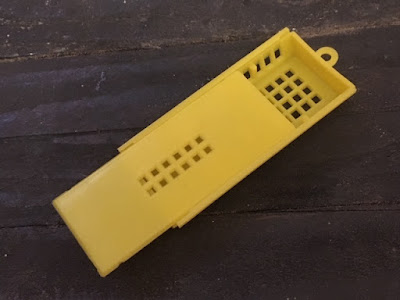Genetics take some getting your head around. The processes of meiosis and mitosis are not easily understood, for me at least. I'll try to explain how honey bee genetics works in a simple way and to explain how understanding it can help in our bee breeding.
Chromosomes are the structures that contain the genes of an organism. Bees have about 15,000 genes. Most animals normally have two sets of chromosomes. One set comes from the mother and one from the father. They are called diploid. Di means two, and ploid stands for chromosome.
Queens and worker bees have 32 chromosomes, 16 from the mother (via the egg) and 16 from the sperm with which the egg is fertilised. Drones are produced from unfertilised eggs. They do not receive a sperm cell when their egg is laid. This means that they only have half the number of chromosomes (16 rather than 32). They are then said to be haploid, from the Greek haploos, single.
Each egg laid by the queen will be unique due to chromosomal cross over during meiosis. Simply put, the genes are mixed. The potential number of possible combinations is huge. Every daughter (worker or daughter queen) will be genetically different from her sisters. Each egg receives half of the queen's 32 chromosomes, she can therefore only pass on half of her genes to her (daughter) offspring.
Drones, as we have said, are produced from unfertilised eggs, their genetic make up is 100% from their mother. Each drone will still be unique, due to the chromosomal crossover over of their mother's genes. All sperm cells produced by an individual drone will be identical, genetic clones. The drone only has 16 chromosomes, each sperm cell must carry 16 chromosomes, so each sperm cell has 100% of this genetic material.
When selecting colonies to breed from we generally breed from our best queen, which makes sense! However when selecting colonies to rear drones from we must remember that drones develope from unfertilised eggs. Their genes come from the mating of their grandmother, not their mother! Not easy the get your head around but it does make sense if you've understood the above. It is therefore essential to keep accurate records for queen and drone rearing.
We can use this knowledge to selectively breed our honey bees. A colony (or colonies) with desirable traits can be used to rear a large number of daughter queens. The sperm cells from the drones produced by this new generation of queens will carry only genes from the original (desirable) queen. For example, if we aquire say a 100% AMM queen (we are interested in native bees after all), raise lots of daughter queens from her and encourage them to raise drones
(here), we can use these colonies in isolated mating apiaries or select only drones from these to carry out artificial insemination to give us 50% AMM - 50% hybrid bees. By repeating the process, taking larvae from the 50% pure AMM colonies and mating with the drones from the daughter queens (100% AMM drones) the next generation will now be 75% AMM. For the following generation 87.5%, the next 93.75, then 96.9%, 98,4%, 99.2% and so on. Starting with bees that are part AMM will mean we start off at a higher percentage.
This technique of line or inbreeding can be used to fix a number of desirable traits not just race. We have to be aware though that there are consequences of using this technique as well as advantages.
This queen is a daughter of an Irish AMM queen. She was raised in 2019. She was open mated away from my main apiary so her worker daughters are a mix of yellow and dark but she will produce 100% AMM drones for the main mating apiary.
The sting in the tail
There is another aspect of honeybee genetics that we should be aware of, sex determination. Whether an individual is male or female is different in honey bees than in mammals. We have seen above that males are produced when the queen lays an unfertilised egg, there is a little more to it though.
There is a gene that determines the sex of bees. There are different alleles, or versions, of this gene. If the allele from the mother (egg) is different to that from the father (sperm) the bee will be female. If they are the same the bee will be male.
Normal Drones. An unfertilised egg will, having only one sex allele, develope as a normal male/drone. There is only one allele and so cannot be different.
Diploid drones. Males can develope from fertilised eggs if the egg and the sperm both have the same sex allele. These drones will not be viable, they contian 32 chromosomes and will not function as a normal male. Worker bees will remove these diploid drones when the egg hatches. The holes left in the brood area result in a pepper pot brood pattern. The worst effects are seen in inbreeding. A brother sister mating will yield only 50% viable brood.
The chances of the two sex alleles being the same are normally low, there are twenty plus versions of the allele at least (I think I have read somewhere that there are over fifty?). By inbreeding the odds of the two alleles being the same become much higher. If we continue to breed from the same closely related group of bees, as in the above example, we will have weak colonies that are suseptable to disease and pests.
We could start with a large population and manage different breeding lines, raising drones from one line each year and alternating in subsequent years. Working in groups with other beekeepers helps here, a larger breeding population will better mainatian genetic diversity.
Also from time to time we can introduce new genetic material by bringing in new queens.
I hope that was a reasonably clear explanation of honeybee genetics and how we can use to select the colonies that we should breed from.



